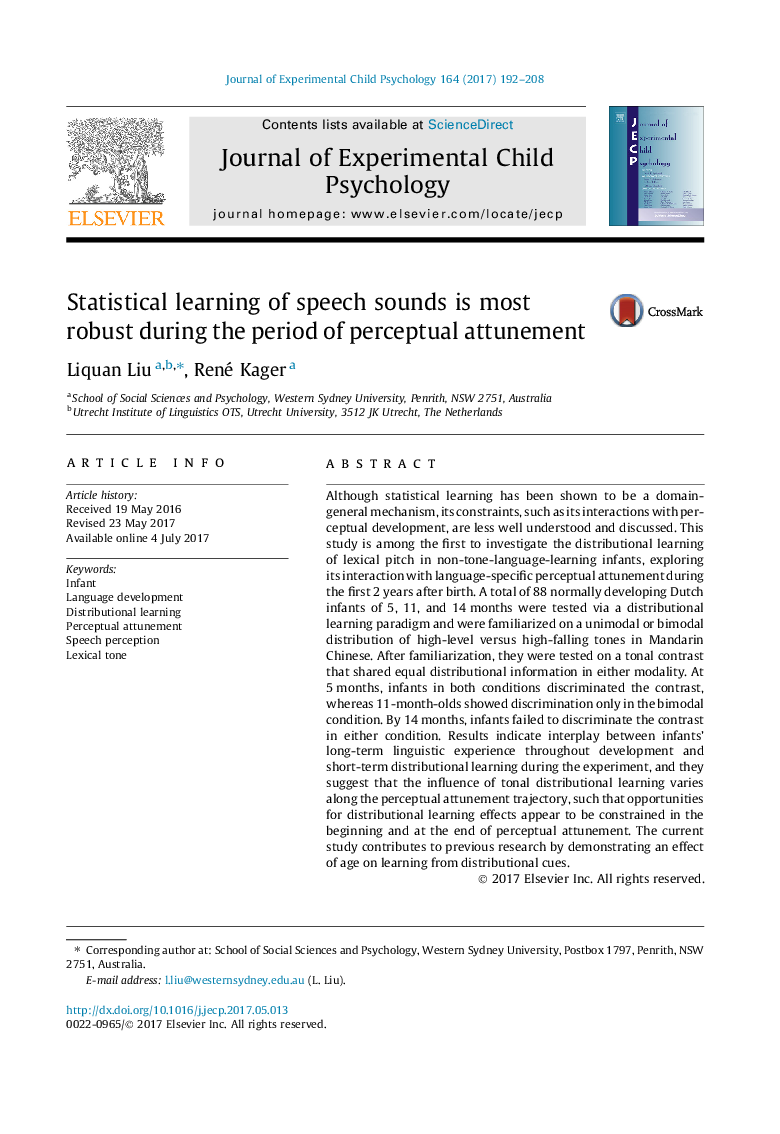| Article ID | Journal | Published Year | Pages | File Type |
|---|---|---|---|---|
| 5039954 | Journal of Experimental Child Psychology | 2017 | 17 Pages |
â¢Unimodal distribution did not hinder 5-month-olds' non-native tonal discrimination.â¢Bimodal distribution facilitates 11-month-olds' non-native tonal discrimination.â¢Bimodal exposure is no longer sufficient to assist discrimination at 14 months.â¢Fast distributional learning is constrained along the tonal developmental trajectory.â¢Infants' fast learning ability interacts with long-term perceptual attunement.
Although statistical learning has been shown to be a domain-general mechanism, its constraints, such as its interactions with perceptual development, are less well understood and discussed. This study is among the first to investigate the distributional learning of lexical pitch in non-tone-language-learning infants, exploring its interaction with language-specific perceptual attunement during the first 2Â years after birth. A total of 88 normally developing Dutch infants of 5, 11, and 14Â months were tested via a distributional learning paradigm and were familiarized on a unimodal or bimodal distribution of high-level versus high-falling tones in Mandarin Chinese. After familiarization, they were tested on a tonal contrast that shared equal distributional information in either modality. At 5Â months, infants in both conditions discriminated the contrast, whereas 11-month-olds showed discrimination only in the bimodal condition. By 14Â months, infants failed to discriminate the contrast in either condition. Results indicate interplay between infants' long-term linguistic experience throughout development and short-term distributional learning during the experiment, and they suggest that the influence of tonal distributional learning varies along the perceptual attunement trajectory, such that opportunities for distributional learning effects appear to be constrained in the beginning and at the end of perceptual attunement. The current study contributes to previous research by demonstrating an effect of age on learning from distributional cues.
